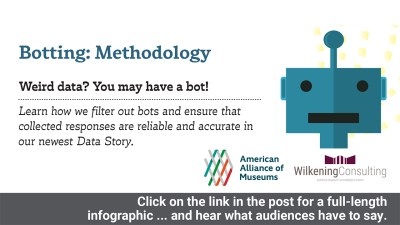
This article originally appeared in the July/August 2022 issue of Museum magazine, a benefit of AAM membership.
Monterey Bay Aquarium is doing its part to cut emissions and waste to keep the effects of climate change from further affecting ocean health.
As land creatures, we may not be wired to think much about the ocean—how its cycles are directly linked to our own survival, and how our choices affect it.
Selfishly, we should. We depend on the ocean in so many ways. Its marine life provides one-sixth of the animal protein we eat. Its waters carry more than 90 percent of the world’s trade—moving goods and raw materials more cost-effectively than any other mode of transport. Its shores are home to nearly half of all people on Earth.
The ocean is the heart of Earth’s climate system; its currents and winds circulate heat and moisture around our planet. The weather patterns we associate with different regions of the world have been relatively stable throughout human history, thanks to the ocean.
And the ocean buffers us from the most severe impacts of climate change, absorbing about 30 percent of the carbon dioxide—and over 90 percent of the excess heat—we’ve produced by burning fossil fuels.
Now, climate change is disrupting fundamental ocean processes that sustain life on Earth. Sea levels are rising, placing tens of millions of coastal residents in harm’s way. Intensifying storms are costing human lives and causing billions of dollars in property damage. It’s time to recognize that human health is directly tied to ocean health.
Given the significance of the ocean—including its role in moderating the impacts of climate change—the Monterey Bay Aquarium, located on California’s central coast, is working on many fronts to keep it healthy and productive.
A Closer Look at the Problem
Climate change is the greatest environmental challenge of our time. Carbon emissions from human activities pose a triple threat to ocean health: warming its waters, changing its chemistry, and depleting its oxygen. This is affecting not just ocean wildlife but also our own survival—in profound ways.
A study published last year by Monterey Bay Aquarium documents the inherent disparities and greatest impacts of climate change across the globe. Heat-trapping emissions originate primarily in developed and industrialized regions in Western Europe, northeastern North America, and the Arabian Gulf, yet the majority of climate impacts and changes in surface temperatures will occur across Africa and Central Asia.
This complex relationship between emissions and impacts is also occurring at the country level, and the United States offers a startling example. Most greenhouse emissions in the US originate in the more industrialized northeast corridor, but most of the impacts of those emissions show up in the West—where land temperatures are increasing most notably in Alaska, South Dakota, Idaho, and Montana.
Scientists at Monterey Bay Aquarium found that just 8 percent of Earth’s surface area generates 90 percent of all human-caused greenhouse emissions—yet more than half of Earth’s landmass will experience extreme warming by the end of the 21st century. The climate disparities study also illustrates the critical role of the ocean in absorbing excess heat and buffering the severity of climate impacts.
The ocean supports all life on Earth, and represents 99 percent of the habitable space where life can exist. Over time, it has generated more than half the oxygen we breathe. It provides us with food, supports jobs, and drives global commerce, and it has buffered us from the worst impacts of climate change.
What the Aquarium Is Doing
One of the aquarium’s top priorities is to address climate change and its impacts on ocean health. As one of the first cultural institutions to sign the “We Are Still In” declaration—a pledge in support of the global climate pact known as the Paris Agreement—it has committed to achieving net-zero carbon emissions in its own operations by 2025.
The aquarium is reducing carbon dioxide emissions as much as possible through energy efficiency improvements throughout the campus’s footprint, encouraging staff and volunteers to decarbonize their commute and installing solar panels on all aquarium property. Then, to balance out the carbon emissions it can’t avoid, the aquarium is purchasing offsets that enable the removal of an equivalent amount of carbon from the atmosphere.
Since 2017, the aquarium has been working with Natural Capital Partners to achieve CarbonNeutral certification, the global standard. The certification involves an independent assessment of our carbon emissions from direct and indirect sources. Then, the aquarium purchases offsets to support low-carbon sustainable development and renewable energy projects around the world, such as the Rimba Raya Biodiversity Reserve in Indonesia and Acre Amazonian Rainforest Conservation in Brazil. These projects are independently verified to assure the quality of the emissions reductions.
Monterey Bay Aquarium is also one of the only event programs that offset the associated emissions from events held on-site. For its corporate events program, it’s gone a step beyond. All events it hosts are CarbonNeutral certified, meaning emissions attributed to events (including travel to and from Monterey and from attendees’ lodging in the area) are offset by planting teak trees.
And the aquarium is building future sustainability through its partnership with Natural Capital’s Million Mangroves, which plants vital coastal trees in southern Mexico, restoring critical habitat for fish and other species. Mangroves can store four times more carbon than a rainforest, making them one of the highest-impact climate and blue carbon (the carbon stored in coastal and marine ecosystems) solutions available. (See “Mangroves: A Key Defense System” sidebar on previous page for more information on the vital importance of mangroves.)
As part of the aquarium’s ongoing efforts to expand sustainable business practices and continuously reduce the net greenhouse gas emissions arising from business operations, it is using data to track progress and inform future strategies to reduce emissions. Monterey Bay Aquarium implements a range of energy efficiency measures in exhibit spaces that include using natural lighting to make the visitor experience feel more immersive, using LED lighting that doesn’t take away from the experience of escapism into an underwater environment, and employing an effective heat exchange and recovery program that uses the heat in stale exhaust air to preheat incoming fresh water for certain fish species on exhibit.
The aquarium is also committed to achieving net-zero waste by making the best choices related to natural resources—from extraction to production to consumption and disposal of materials. Just before closing its doors to the public in March 2020, the aquarium conducted its first waste audit, an analysis of the amount and type of waste generated across the entire campus. The audit found that 40 percent of the waste generated at the aquarium is destined for the landfill. The aquarium is continuing to reduce this percentage by composting, recycling, and preventing the waste in the first place. At the time of the waste audit, the aquarium was diverting more than half of its waste, in large part by composting food from the cafe, on-site catering, and animal care operations, therefore, preventing methane (a greenhouse gas far more potent than carbon dioxide) from building up in landfills.
In addition, the aquarium is continuing to phase out petroleum-derived products like plastic, which are increasingly difficult to recycle in the United States. This is important since it’s estimated that over 90 percent of albatross chicks have plastics in their bellies.
The aquarium also sources environmentally responsible, as well as local, seafood and land-grown produce to serve in the cafe and for the aquarium’s living collections. Buying locally produced seafood and produce allows the aquarium to shrink its carbon footprint and build connections with the people who produce the food prepared at the aquarium. It also creates transparency along the food supply chain, supports fishing and farmer families, strengthens local economies, and helps build healthy regional food systems.
We Must Act Now
There are still other signs of how the ocean is being negatively affected. Warming water is choking tropical corals and stunting kelp forest growth along the California coast. Carbon pollution is making seawater more acidic, dissolving the shells of plankton that are the foundation of ocean food webs.
To solve the climate crisis, humanity must address the health of the ocean—the largest ecosystem on our planet. The ocean is our first line of defense against the impacts of climate change, absorbing a significant share of the excess carbon dioxide and heat we produce by burning fossil fuels. And a healthy ocean helps protect humanity from the intensifying impacts of climate change.
Moving forward, the ocean must be front and center in the climate conversation. When we protect Earth’s living heart, home to the greatest diversity of life on our planet, we safeguard ourselves.
Mangroves: A Key Defense System
Mangrove forests are key to protecting coastal communities from crashing waves, storms, and flooding. This natural defense system is more important as storm intensity and frequency increase due to climate change. Unfortunately, in many places mangroves have been cleared to make room for development, agriculture, or aquaculture, which leads to more erosion and less protection from storms.
The dense root structure of mangroves also helps trap muddy soil, slowing coastal erosion and preventing runoff from deteriorating the water quality of nearshore habitats like coral reefs. Mangroves also absorb carbon dioxide from the atmosphere and use it to build their leaves, stems, and roots. Once the leaves or tree die and fall to the seafloor, the carbon is sequestered in the soil. The low-oxygen, waterlogged soil slows decomposition of the plant matter—instead, the carbon is trapped in the soil for millennia.
Mangroves, along with seagrasses and salt marshes, are called blue carbon ecosystems due to their ability to sequester large amounts of carbon from the atmosphere. In fact, blue carbon systems are estimated to sequester carbon at a faster rate than land forests, even though they cover less area on the globe. Preserving these blue carbon ecosystems, and restoring habitats that have been lost, is critical to slowing the impacts of climate change.
Today, mangroves are disappearing at about 1 to 2 percent per year. Over the previous 50 years, it is estimated that 35 percent of mangroves have disappeared. One out of every six species of mangroves is considered endangered, threatened, or vulnerable, according to a 2010 International Union for Conservation of Nature assessment.
Much of this loss is due to human behavior—deforestation for development, unsustainable aquaculture, agriculture, and timber harvesting. As sea level rises, mangroves are no longer able to retreat inland because they run up against human-developed structures.
The loss of mangrove habitats has big consequences. Coastal areas are at risk, important animal habitats disappear, the lives and livelihoods of millions of people around the world are threatened, and carbon dioxide is released into the atmosphere.
Resources
Natural Capital Partners
Naturalcapitalpartners.com
Kyle S. Van Houtan, Kisei R. Tanaka, Tyler O. Gagné and, Sarah L. Becker, “The geographic disparity of historical greenhouse emissions and projected climate change,” Science Advances, July 14, 2021
science.org/doi/10.1126/sciadv.abe4342
Monterey Bay Aquarium, “Achieving Net Zero Carbon Emissions”
montereybayaquarium.org/stories/bringing-our-net-carbon-emissions-down-to-zero








Comments